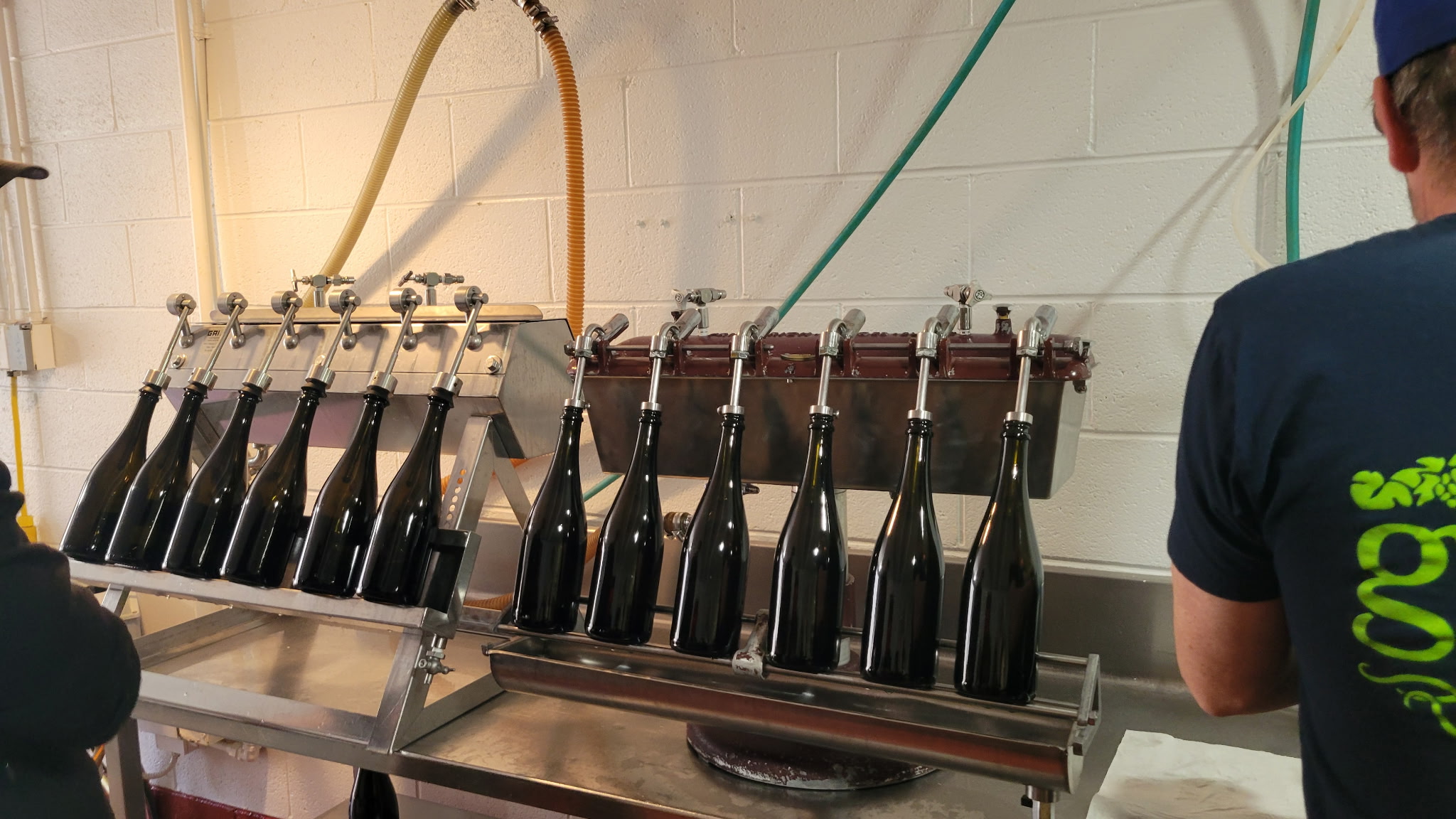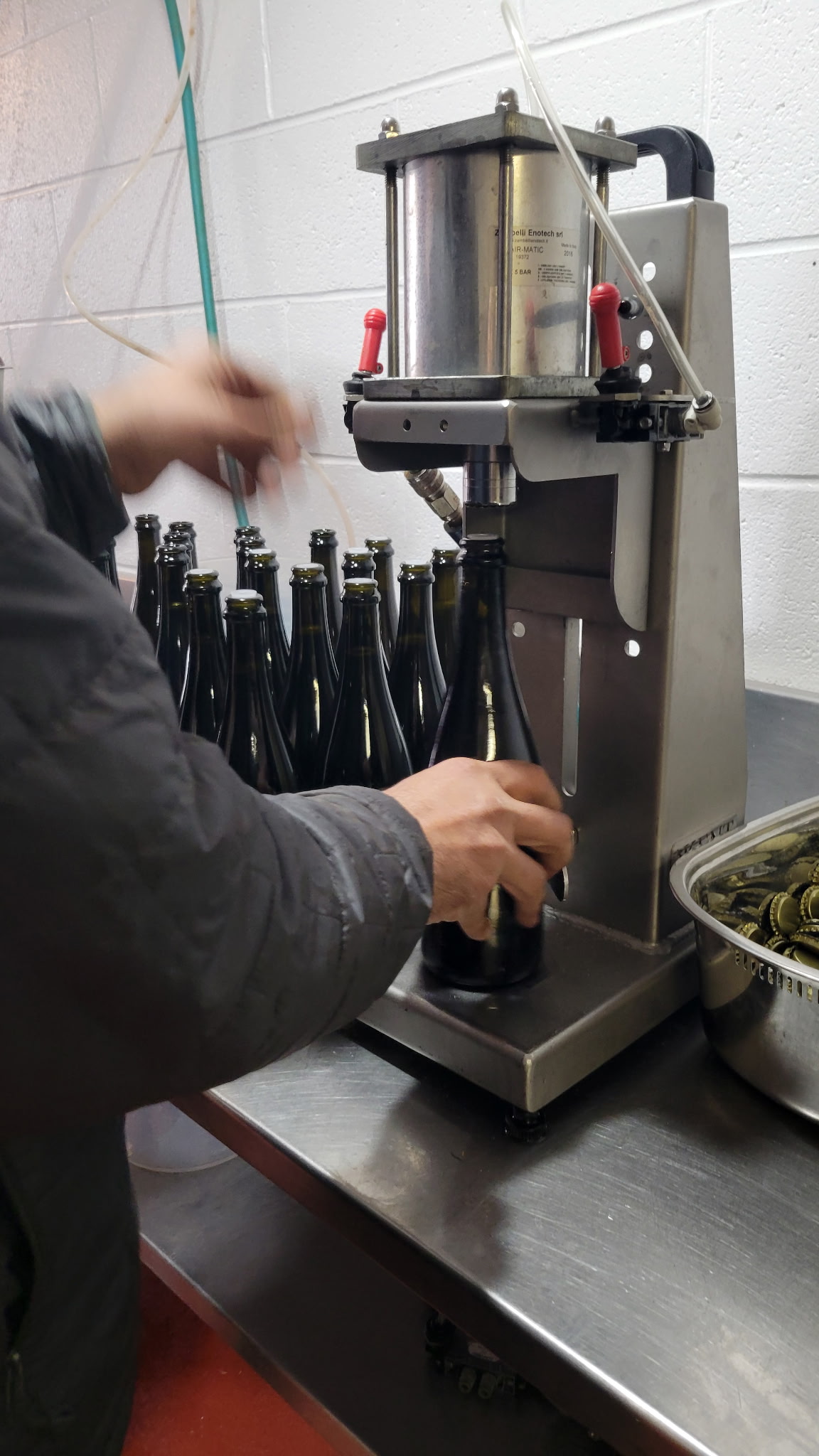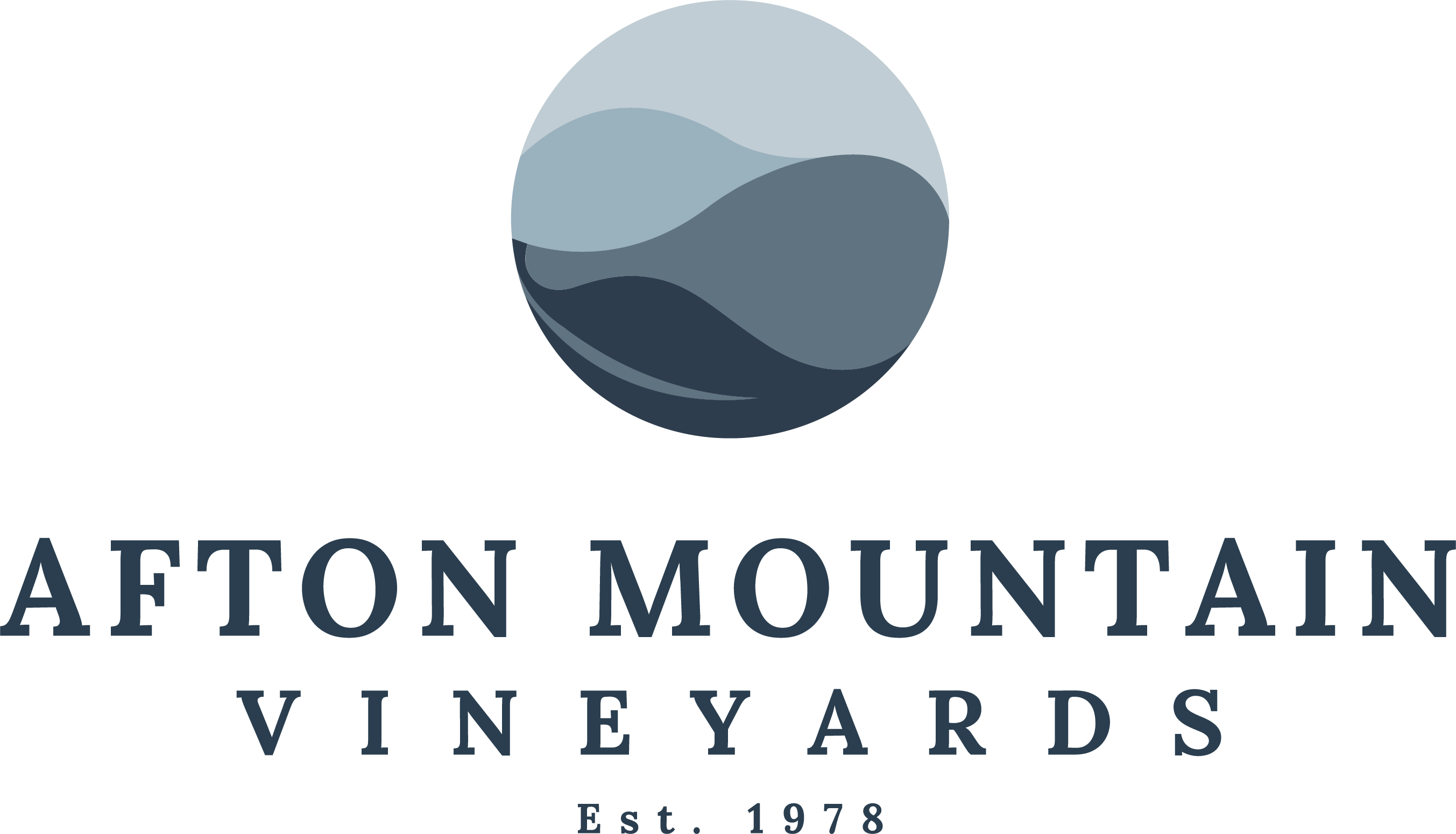Blog
Blog

Have you ever wondered why some sparkling wines are so special? The secret lies in the meticulous hand-bottling process that combines centuries-old traditions with careful precision. The journey from grape to glass is a multi-step, complex, and fascinating process.
Starting with the Basics: Making the Base Wine
Before any bubbles appear, winemakers create what's called a "base wine" or "cuvée":
- Grapes are carefully harvested and gently pressed to extract juice.
- This juice undergoes its first fermentation in tanks or barrels (just like regular wine). Different vineyards use tanks or barrels to create their unique flavors. Afton Mountain Vineyards ages their juice in stainless steel to create their sparkling wines.
- Often, different base wines are mixed together to create the perfect flavor profile.
The Traditional Method: Where the Magic Happens
This is the same process used to make Champagne (though only sparkling wine from the Champagne region of France can use that name).
First Bottling: The Tirage Stage
The base wine gets some special additions:
- Sugar solution (food for the yeast)
- Active yeast culture (the tiny organisms that create bubbles)
- Yeast nutrients (to keep the yeast happy and working)
- Fining agents like bentonite (to help remove cloudiness and promote clarity and stability of the wine)
The bottles are hand filled with care:
- Bottles are individually filled using specialized equipment that maintains a consistent fill level
- This requires careful attention to avoid oxidation and ensure proper headspace
- Each bottle is typically filled slightly below capacity to allow room for secondary fermentation
The bottles are closed so the magic can happen:
- A bidule (small plastic cup) is placed in the bottle neck to collect yeast sediment
- Bottles are sealed with crown caps rather than corks at this stage
- Each cap must be properly aligned and secured
The Second Fermentation: Creating Bubbles
Here is where the transformation happens:
- The sealed bottle creates a confined environment
- The yeast eats the added sugar, producing alcohol and carbon dioxide (CO₂)
- Since the CO₂ has nowhere to escape, it dissolves into the wine, creating natural bubbles
- This process takes about 1-2 months, but the wine continues aging much longer
Aging on the Lees: Building Flavor
- Bottles are stored horizontally in cool cellars
- The wine ages on lees (dead yeast cells), which creates complex flavors like bread, toast, or biscuit
- This aging can last from 15 months to several years
- The winemaker is still hard at work during this process as they periodically check the bottles for integrity and pressure
Riddling or Remuage: Collecting the Yeast
After aging, the yeast needs to be removed, but first it must be collected:
Traditional hand method:
- Bottles are placed neck-down in A-frame racks called pupitres
- Each day, skilled workers give each bottle a slight turn and gradually tilt it more vertically
- This slowly moves all the yeast sediment into the bottle neck
- This process requires tremendous skill and patience
Modern alternative:
- Machines called gyropalettes can perform this task more efficiently but human oversight is still required

Disgorging or Dégorgement: Removing the Yeast
These crucial steps remove the yeast sediment:
Neck freezing:
- The bottle neck is immersed in a freezing solution (about -27°C/-16°F)
- The sediment freezes into a solid plug
Manual disgorging:
- The bottle is held upside down
- The crown cap is carefully removed
- Internal pressure forces out the frozen sediment plug
- Quick reflexes and precision are required in order to minimize wine loss
Adding the Dosage: Sweetness Control
- A mixture of wine and sugar (also called a dosage liqueur) is prepared
- The amount added determines the sweetness level, from "Brut Nature" with no added sugar to the very sweet "Doux"
- Precision is important again as each individual bottle receives the appropriate amount of dosage to maintain consistency across the production
Final Corking and Securing
- A high-quality cork is compressed and inserted into the bottle. The mushroom shape that everyone is accustomed to seeing happens over time. At this point the cork is a cylinder.
- A wire cage (called a muselet) is placed over the cork and twisted precisely. Six half turns is often the perfect amount.
- This secures the cork against the substantial pressure inside (5-6 atmospheres)
- The muselet must be tightened by hand to ensure proper tension
Finishing Touches: Time to Make a Great Impression
- Each bottle is wiped clean and inspected
- Decorative foil is applied over the cork and neck often using a heat shrink process
- Labels are carefully applied, often by hand for premium products
- A final inspection ensures everything is perfect
- When you visit the tasting room at Afton Mountain Vineyard, you can sample their line of sparkling wine.
Quality Control: The Human Touch
Hand bottling allows for careful quality control at each stage:
- Visual inspection of each bottle
- Monitoring of fill levels
- Checking for proper fermentation
- Ensuring clarity of the final product
- Testing samples for proper pressure and flavor development
Why It Matters
This labor-intensive process explains both the premium price and unique quality of traditionally made sparkling wines. Each bottle requires dozens of individual handling operations, making it truly a handcrafted product.
The next time you celebrate with a bottle of traditionally made sparkling wine, take a moment to appreciate the craftsmanship that went into creating those perfect bubbles!
